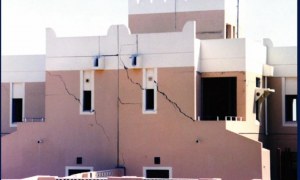🕑 Reading time: 1 minute
Crosshole Sonic Logging (CSL) is one of the most accurate pile integrity tests to determine the integrity of deep foundation elements. CSL sends ultrasonic pulses through the concrete from one probe to another probe present in a pile and detects the structural integrity based on the received waves. It is mainly used for the integrity test of slurry walls and drilled shafts.
A CSL is also known as sonic logging or logging test. The test helps to detect anomalies inside the concrete within a few minutes.
Crosshole tomography (CT) is conducted to define the size, shape, severity, and location of the defects that are determined by the CSL test and is performed after it. Most of the issues associated with the problematic concrete pours are detected by CSL and CT Analysis.
This article explores some of the important features, applications, and test procedures of the crosshole sonic logging test.
Contents:
Purpose of Crosshole Sonic Logging (CSL) Pile Test
Drilled shafts and slurry walls are prone to several flaws that may affect their integrity. Some of these issues are:
- Pile damage
- Excess water intrusion
- Caving in drilled shafts
- Tremie "burping"
- Reinforcement cage buckling
Quality assurance immediately after the concrete pour saves a substantial amount of time and prevents late detection of flaws. Proper assessment of the exact scope of defects helps to provide efficient remedial measures. CSL helps to detect such early issues observed in drilled shafts and slurry walls.
In general, CSL and CT can be used any structure that supports the transmission of ultrasonic waves. It can be hence applied to concrete, grout, and slurry that is placed above or below the waterline. The test can also be conducted on auger cast piles or any mass concrete pouring that requires utmost quality assurance.
Crosshole Sonic Logging Pile Test Procedure
The major steps involved in crosshole sonic logging testing are:
- Installation of access tubes
- Record of readings
- Interpretation of results
1. Installation of Access Tubes
Install a minimum of two access tubes into the piles before the concreting process. The test generally uses PVC or steel tubes of diameters ranging from 38 to 50 mm. The tubes are tied to the inside of the rebar cage. Once they are installed, they are filled with water. The number of pipes installed depends on the size of the structure and the resolution of the results required.

2. Recording the Readings
The reading is taken using a source and receiver hydrophones. Both the hydrophones are lowered to the bottom of the tubes. When the hydrophones are lifted, the horizontal ultrasonic pulse velocity is measured. The reading resolution of the sample is controlled by a depth wheel. Generally, the readings are taken in 6 cm intervals.

3. Interpretation of Results
The ultrasonic waves propagate when passing through a good quality concrete. As shown in the figure above, a strong response is given by a good quality concrete, while poor quality or voided concrete shows longer ultrasonic wave travel times and lower amplitudes. If there is a substantial void in concrete to hinder the signal between the hydrophones, there is a complete loss of signal.

CSL and CT analysis require Freedom Data PC devices for mobile and onsite analysis. Crosshole sonic logging integrity test is standardized by ASTM D6760.
Advantages of Crosshole Sonic Logging Test
The main advantages of crosshole sonic logging test are:
- CSL determines the size, shape, severity, nature, and location of the anomalies in the concrete foundation.
- Multiple defects are identified and located.
- The method is quick and safe. It can be performed within five minutes.
- CSL test can be performed above and below the waterline structures.
- The test provides high-resolution images with complete accuracy and simplicity.
FAQs
Crosshole sonic pile integrity test is mainly used for the integrity test of slurry walls and drilled shafts. The test can also be conducted on auger cast piles or any mass concrete pouring that requires utmost quality assurance.
The main advantages of crosshole sonic logging test are:
1. CSL determines the size, shape, severity, nature, and location of the anomalies in the concrete foundation.
2. Multiple defects are identified and located.
3. The method is quick and safe. It can be performed within five minutes.
4. CSL test can be performed above and below the waterline structures.
5. The test provides high-resolution images with complete accuracy and simplicity.
CSL sends ultrasonic pulses through the concrete from one probe to another probe present in a pile and detects the structural integrity based on the received waves. The ultrasonic waves propagate when passing through a good quality concrete. As shown in the figure above, a strong response is given by a good quality concrete, while poor quality or voided concrete shows longer ultrasonic wave travel times and lower amplitudes. If there is a substantial void in concrete to hinder the signal between the hydrophones, there is a complete loss of signal.
Read More
Non-destructive Tests on RC Structures: Basic Methods, and Purposes


